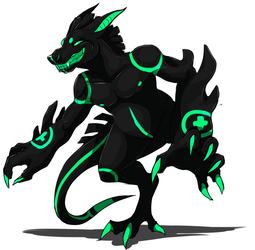Sign In
Close[PART-1] The Ich experiment by ConViCT
wrote the notes for this, and it also features her character
as well as
Evelyn's Notes 30th March 2014
I have found over time, that collaborative research is often quite beneficial. Of course finding an individual of the right discipline can often be quite a task, but I am fortunate in this instance to have encountered Dray previously, and by chance she was hoping to do some experimentation in a field I am growing increasingly more intrigued by.
After much discussion we agreed to work together on a most fascinating project. I was able to provide the necessary equipment and...privacy, while she provided the test subject and the organism that we would be observing though how she came into possession of either is somewhat of a mystery. The experiment is set for a duration of seven days, over which I will be recording our observations of the life cycle of the organism and its effect upon the host.
The organism in question is a mutant strain of Ichthyophthirius multifiliis, or “ich/ick” for short. It is a nuisance ectoparasitic protozoan, most commonly seen to infect fish, and is the bane of aquarium keepers the world over. In its non-mutated form the fully developed trophont is just visible to the naked eye, appearing to be like a grain of salt on the surface of the skin. At this stage it will burrow into the flesh and begun feeding off the fluids of the host. A cyst will form, and the parasite will then begin dividing as it enters the reproductive phase of its life cycle. Eventually the cyst will burst, releasing the next generation of protozoa into the tank to seek out new hosts. It is a destructive disease, one that needs thorough and careful treatment.
The specimens Dray has cultivated are of the same ilk, but much larger. Large enough say, to occupy the palm of my hand, though I wouldn't be so foolish as to actually test this observation... at least not with my own hand. It takes about two weeks for the tank to be properly cycled to meet the optimal temperature and acidity, comparable to a standard tank prone to these sorts of infections. In that time Dray ensures our protozoa are in good condition and we get them accustomed to the new tank temperature slowly. Our test subject, I am assured, is perfect for this potentially exhausting experiment. On a personal note, I quite enjoy the aquarium water smell the room as taken, the trickling sound of the filters is very calming. Perhaps I should get a tank for my living room.
Dray does much of the legwork introducing our test subject to the tank, and we took a coffee break to allow time for his thrashing and resistance to subside. Dray seems positively elated when we return to release the Ick into the tank. The organisms are just now becoming oriented to their new surroundings, and Dray explains aloud what is going on to our volunteer.
Perhaps its the undulating of the water as the test subject begins to struggle again, but there is something so calming about watching their movement around his body.
We will observe the life cycle of the organism over the next week, noting any radical differences in infection or reactions from the subject during this time.
Submission Information
- Views:
- 486
- Comments:
- 0
- Favorites:
- 2
- Rating:
- General
- Category:
- Visual / Digital

![[PART-1] The Ich experiment](https://cdn.weasyl.com/static/media/5e/35/b4/5e35b4e4e5868c3baf491349b1536e9cdf8c2e06b666d837077ba3b841115b7d.png)


